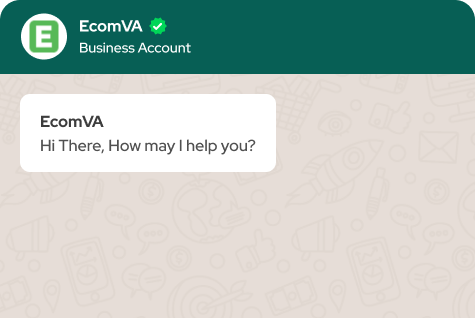How to do Content Optimization on SEO
Content optimization is a vital aspect of search engine optimization (SEO) that focuses on maximizing the visibility and relevance of website content to improve search engine rankings and attract organic traffic.
In an increasingly competitive online landscape, where thousands of websites are vying for attention, effective content optimization techniques can significantly impact a website’s success.
Step-by-step guide to optimizing content for SEO
1. Know Your Audience
Before diving into SEO content best practices, understanding your target audience is essential.
- Who are you trying to connect with? Think about stuff like how old they are, what they’re into, and how they use the internet. Picture your perfect customer – what do they want, and what kind of info are they looking for?
- Keyword Research: What terms are people typing into search engines to find information related to your business? Use free keyword research tools like Google Keyword Planner or answerthepublic.com to discover relevant keywords and search queries. Focus on keywords with good search volume but manageable competition.
2. Craft Compelling Content
Now that you know your audience and their search intent, it’s time to create content that resonates:
- Target the Right Keywords: Sprinkle your target keywords throughout your content naturally, but avoid keyword stuffing (overusing keywords unnaturally). Focus on incorporating relevant keywords in your title tags, headings, meta descriptions, and throughout the body of your content.
- Headings Matter: Structuring your content using clear and concise headings is one of the best content SEO tips. Think of headings as mini-signs that guide readers and search engines through your content. Use H1 for your title and H2s and H3s for other subheadings that break down your content into easily digestible sections.
- Content is King (and Queen): Concentrate on creating informative, high-quality, and engaging content that provides value to your audience. Whether it’s blog posts, articles, product descriptions, or infographics, ensure your content is well-written, informative, and addresses the needs of your target audience.
- Freshness is Key: Search engines favor fresh content. Develop a content calendar to maintain a flow of new and updated information on your website. This not only keeps your audience engaged but also tells search engines that your website is active and relevant. You can hire an e-commerce marketing assistant to create a calendar that works well for your industry.
3. Optimize for Search Engines
Here’s where the magic of on-page SEO optimization happens:
- Title Tags and Meta Descriptions: They are like billboards for your content in search results. Craft compelling title tags (around 60 characters) that precisely reflect your content and include your target keyword. Write engaging meta descriptions (around 160 characters) that entice users to click on your content snippet.
- Internal Linking: Connect your content by linking to relevant pages within your website. This helps search engines understand what is the structure of your website and enhances navigation.
- Image Optimization: Don’t forget about the power of visuals when you learn about how to optimize content for SEO! Optimize your images by using keywords naturally in the file name, alt text descriptions, and captions. This not only improves accessibility for visually impaired users but also helps search engines know the content of your images.
- Mobile-Friendliness: Ensure your website and content are optimized for mobile devices. With most of the web searches now happening on smartphones, a mobile-friendly website is crucial for good SEO.
4. Content Optimization in Action
Let’s take a practical look at how to optimize a piece of content, step-by-step:
Example: You’re writing a blog post about “Best Hiking Trails for Beginners in California.”
- Keyword Research: Using your keyword research tool, you discover that “beginner hiking trails California” has a good search volume with moderate competition.
- Content Creation: Craft a well-written and informative blog post that details beginner-friendly hiking trails across California. Include captivating visuals like pictures of the trails and maps for easy navigation. SEO-friendly content creation is necessary so add relevant keywords naturally in the content.
- Target Keyword Integration: Naturally incorporate “beginner hiking trails California” and related keywords throughout your content, including the title tag, headings, meta description, and body text.
- Headings and Structure: Structure your content using clear headings like “Top 5 Beginner Hiking Trails in Northern California” and “Essential Gear for Your First Hike.”
- Image Optimization: Optimize images as a part of on-page SEO optimization of the hiking trails by including relevant keywords in the file names and alt text descriptions (e.g., “Mount Shasta Hiking Trail”).
- Internal Linking: Link to other relatable content on your website, such as blog posts about hiking gear or tips for beginner hikers.
5. Beyond the Basics
While these steps provide a solid foundation, consider these additional tips for even better results:
- Content-Length: While there’s no one-size-fits-all answer, aim for content that is comprehensive and informative. Research suggests that longer content (around 1000+ words) tends to perform better in SERP but focuses on quality over quantity. Ensure your content is well-structured and informative, and avoid unnecessary fluff.
- Content Formatting: Break up your text with numbered lists, bullet points, and short paragraphs to improve readability. Use bold text to highlight key points. However, content formatting will vary according to your industry. So, if you run an e-commerce business, you can hire an e-commerce marketing assistant for the best insights.
- Analyze and Adjust: SEO is a dynamic process. Utilize website analytics tools like Google Search Console for SEO content analysis. Check your content’s performance and identify areas for improvement. See what content connects best with your audience, and which keywords are increasing traffic, and adjust your approach accordingly.
Regularly monitoring and analyzing the performance of optimized content is also essential to making necessary adjustments and continuously improving SEO efforts. By prioritizing content optimization strategies as part of an overall SEO strategy, businesses can gain a competitive edge, increase their online presence, and establish themselves as authorities in their respective industries.
Remember, content optimization is an ongoing process. Continuously monitor the performance of your content, stay updated with changes in search engine algorithms, and adapt your content strategy to meet user needs and search engine requirements. By optimizing your content for SEO, you can improve its visibility, attract organic traffic, and enhance the overall user experience on your website.
Virtual Assistant Service
Get in touch






